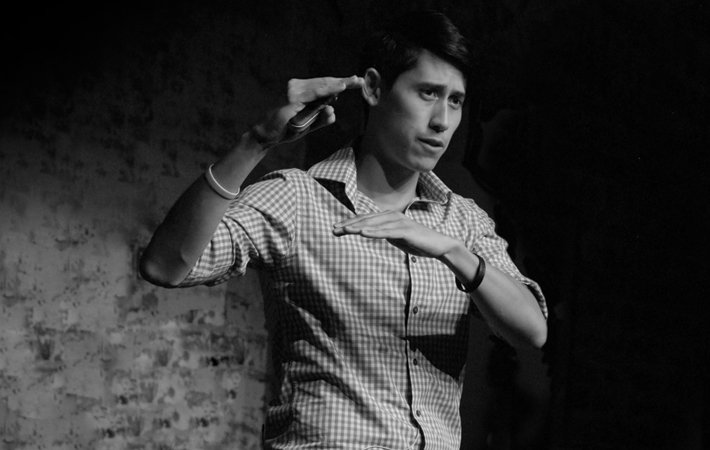The engineering of freedom

Dr Jordan Nguyen on how to heal humanity, one innovation at a time
Jordan Nguyen is a biomedical engineer, inventor and futurist. He was named finalist for NSW Australian of the Year 2017, has been a member of the board for the NSW Medical Technology Knowledge Hub, and has lectured UTS Engineering Masters students in Artificial Intelligence design and Biomedical instrumentation. He was also named in the top 100 global influencers on Virtual Reality in Onalytica’s Top 100 Influencers and Brands report in May 2016.
Tell us about your work.
I work in robotics, artificial intelligence, virtual reality and augmented reality and biomedical technologies, so it has very much had a health and medical application, and a lot of what we do has a natural application in assisted mobility.
I’ll apply a lot of those technologies into disability, or assisted technology. Things that can harness the body’s signals, and how those signals can potentially be harnessed to control technology.
The potential application for neuroscience and intelligent technology is enormous. There is a great deal that can be used to help those with a disability, however the broader picture is using technology for humanity, and how that intersection is going to influence us and help us improve society.
What are the main obstacles to innovation?
The main limitation to innovation is having too many boundaries or project parameters. A lot of the time, innovation is all about creativity, imagination and freedom to move and try new things. A big part of innovation is being able to try new things and not being afraid to fail, because you’ll learn through that. One of the key sayings within innovation work is ‘fail, and fail fast’, so the idea is to figure what might go wrong as quickly as possible, think of ways around those problems as quickly as possible, and also recognise when something won’t work, and having the courage to start again with those learnings. So the more boundaries or expectations are placed on innovation, the harder it is to explore new ideas.
What encourages and accelerates innovation?
Sometimes when we’re working on an engineering project, I’ll bring in artists or poets, or people who are creative and will look at our problem in a completely different light. So a diversity of ideas is so important when it comes to being innovative, different perspectives and opinions will help you think differently too. There’s nothing worse than a bunch of people working on a project all thinking exactly the same way.
Environment also plays a huge part in encouraging innovation. At different points in the process, you want to be in different environments. Naturally it depends on the type of project and what’s inspired it, but a big part of innovation is the why. Why are we doing this? Are we doing this to solve a specific problem? Is it going to improve lives
Does innovation ever happen by accident?
Yes. That’s why I’m always encouraging people to throw themselves completely into an idea, even though you may not know how you’re going to do it or what the outcome might be.
Sometimes innovation comes from mistakes. A good example of that is my recent presentation at TEDxSydney. I presented on the idea of us creating virtual copies of ourselves. So for my presentation I created an exact virtual 3D video clone of myself using something called volumetric capture, and in the virtual world was able to completely stand face to face, and physically walk around and inspect my virtual self. And when I was standing behind my virtual body, I noticed my right shoulder (on my virtual self) was dropped and thought I should get that looked at! What’s interesting is I had never noticed it before, because what we often see in the mirror is a built up perception or younger version of ourselves which isn’t often accurate. I ended up going to a podiatrist straight after that and got an insole for my shoe which fixed a problem I had never been able to see until I could objectively walk around a virtual model of myself. It then occurred to me that this could potentially be very useful for eating disorders or body dysmorphia, so we’re going to start pushing this technology into those areas to see what potential impact it can have to people suffering those conditions.
For the full story plus many others, visit us at Two or Three International Towers and pick up a hard copy of the It. publicaiton.

